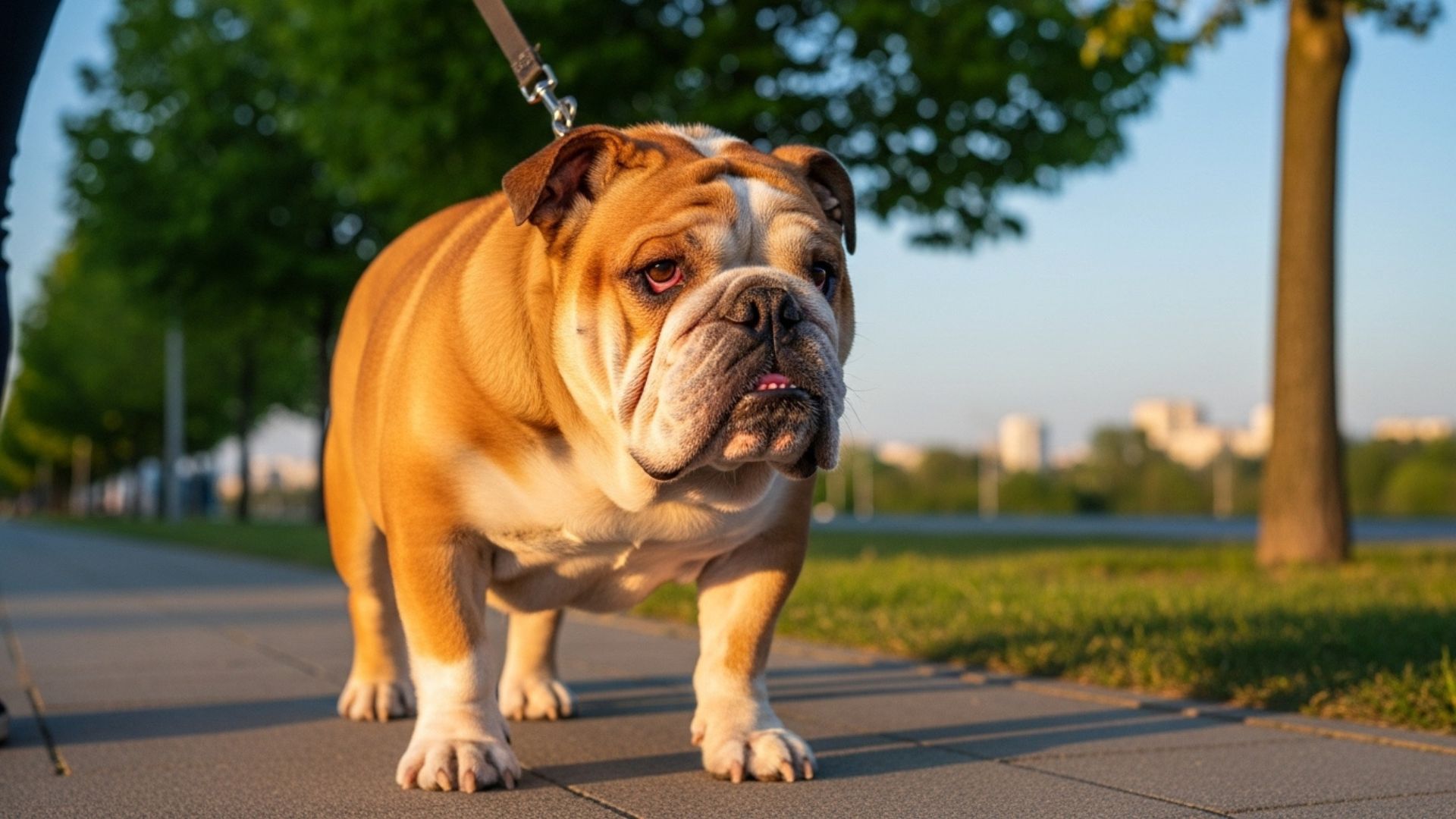They look adorable in photos, melt hearts with puppy eyes, and often top popularity lists — but behind the cuteness, some dog breeds face serious health problems which requires require lifelong management.
As pet lovers, it’s easy to fall for a breed’s charm without realizing the lifelong health issues that can come with it.
From breathing issues to mobility issues and genetic issues, certain breeds require extra care, constant vet visits, and sometimes heartbreaking decisions. Choosing a dog shouldn’t just be about looks; it’s about giving a healthy, happy life to a companion who depends on you completely.
We’ll take a closer look at seven popular but unhealthy dog breeds that potential owners should think twice about. Our goal isn’t to scare or shame — it’s to inform, so you can make a compassionate, well-informed choice. Because real love means understanding the risks before you fall for that wagging tail.
Did You Know? Veterinary data shows that brachycephalic (flat-faced) breeds such as Pugs and Bulldogs are up to 3 times more likely to develop respiratory issues than other breeds. Cute? Absolutely. But they often need extra care and attention.
Unhealthy Dog Breeds You Should Reconsider
1. English Bulldog

Lifespan: 8 – 10 years
Ah, the English Bulldog—wrinkly, squat, and forever looking like they just rolled out of bed… or are silently judging you. These little charmers have been stealing hearts for centuries.
Originally bred in England for bullbaiting (a sport we’re glad they don’t play anymore), today’s Bulldogs are all about lounging and loving… mostly lounging.
Modern Bulldogs were bred for smooshed faces, short legs, and tiny tails, which won them awards at dog shows—but also made them prone to a range of health issues.
While some Bulldogs are generally healthy, the breed is often considered among “the most unhealthy dog breeds” due to their susceptibility to certain conditions, including:
Respiratory issues
Pain and mobility problems, like hip and elbow dysplasia
Luxating patella
Obesity
Skin problems
Eye issues like Cherry Eye
The English Bulldog is known for its friendly nature and can be an excellent family companion. However, they thrive best in the right household, so potential owners should understand what to expect before bringing home a Bulldog puppy.
Owning an English Bulldog is a full-time job of love, patience, and careful care. They might snore like a tiny chainsaw and need more vet visits than your average pooch, but the reward is endless cuddles and the kind of personality that makes every wrinkle worth it.
2. Pug

Lifespan: 12 – 15 years
Pugs are like the class clowns of the dog world—small, mischievous, and endlessly entertaining. These squishy-faced companions have been charming humans since 400 B.C., originally keeping royal families in China amused alongside the Pekingese.
Pugs are exceptionally friendly dogs that thrive on attention from their owners. They’re true people-pleasers who love being involved in daily family activities.

While Pugs can be generally healthy, their adorably smooshed faces and playful personalities come with a few quirks that owners need to watch out for:
Brachycephalic airway syndrome (breathing difficulties)
Eye issues like proptosis and corneal ulcers
Hip dysplasia
Because of their flat faces, Pugs do best as mostly indoor dogs, with outdoor adventures kept short and monitored, says PetMD.
They can be a little drama queens if they get too hot or tired, so a watchful eye is key. But if you’re ready for snorts, snuffles, and plenty of personality packed into a tiny body, a Pug can be a lifetime of laughs and love.
3. French Bulldog

Lifespan:10 – 12 years
Meet the French Bulldog: the pint-sized cousin of the English Bulldog with big bat ears, a squishy face, and a personality that can fill a room twice their size. French Bulldogs are cheerful and outgoing, with playful, friendly personalities.
According to the AKC, they were crowned the most popular dog breed in the U.S. in 2022! They adapt happily to life with singles, couples, or families, require minimal outdoor exercise, get along well with other pets, and love meeting new people.

Frenchies are lovable, charming, and endlessly photogenic, but their compact charm comes with a few health quirks:
Brachycephalic airway syndrome
Luxating patellas
Skin allergies
Intervertebral disc disease (IVDD)
They interact well with others, and with proper socialization, they usually get along with most people and pets. They have moderate energy and enjoy social walks.
These brachycephalic breeds can snore like a tiny chainsaw, scratch like there’s no tomorrow, or give you a side-eye that says, “I’m adorable, you’ll forgive me.” With a little extra care, a healthy lifestyle, and regular vet visits, French Bulldogs can live comfortably and continue to be the ultimate lap-and-heart-stealers.
4. Cavalier King Charles Spaniel

Lifespan: 9 – 14 years
Cavalier King Charles Spaniels got their name from British royalty in the 17th century. King Charles I and his son, Charles II, adored the breed so much that they brought their dogs everywhere.
Originally bred to keep laps warm in drafty castles and during chilly carriage rides, these friendly dogs have a gentle and affectionate nature, making them an ideal choice for first-time dog owners.
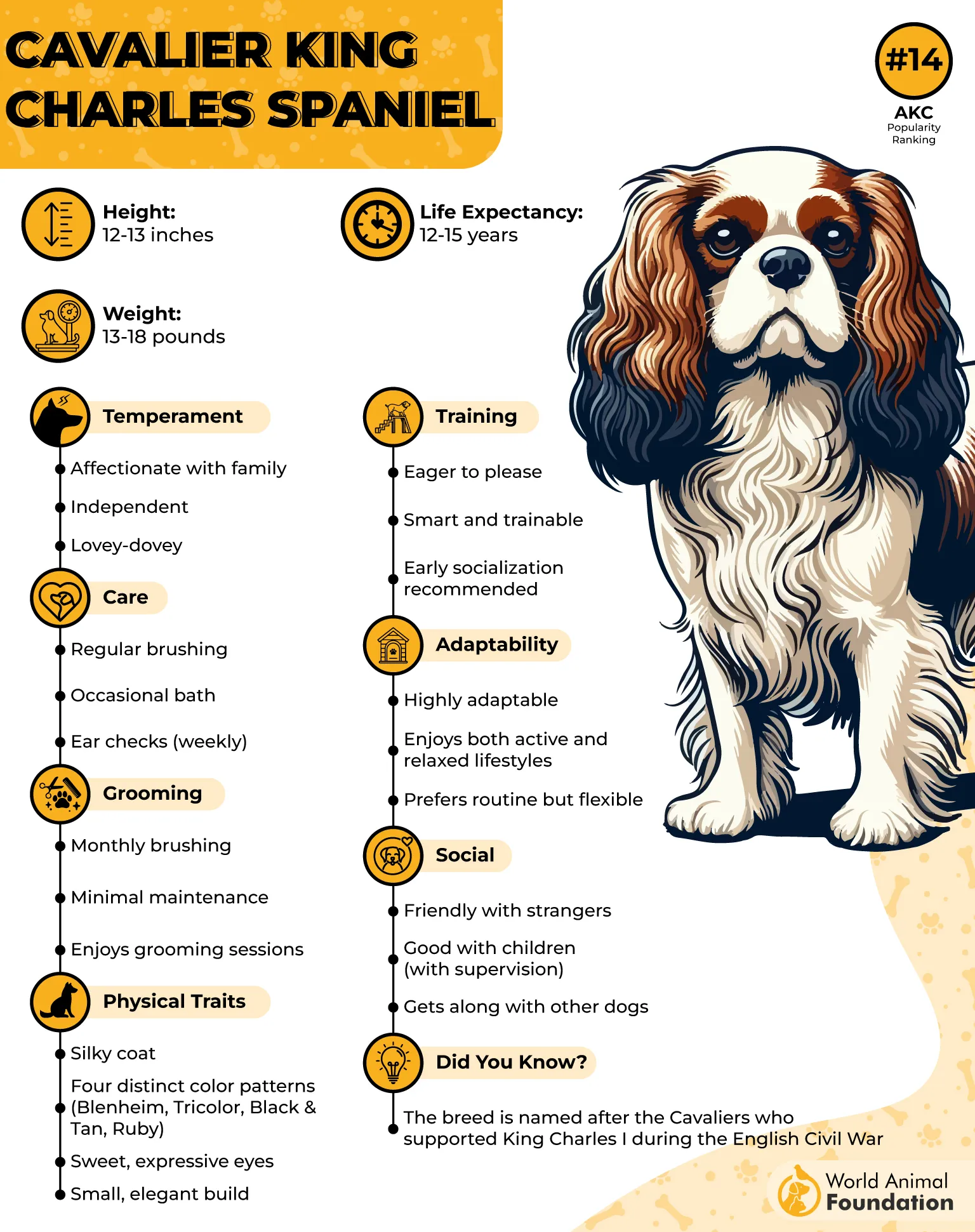
Cavalier King Charles Spaniels are the epitome of elegance wrapped in a tiny, fluffy body. Affectionate, gentle, and often happiest curled up on your lap, these little companions can melt hearts with just one soulful look.

But behind those big, expressive eyes, Cavaliers are prone to a few health challenges:
Mitral valve disease
Eye problems like cataracts and retinal disorders
Syringomyelia
Ear infections
Their long, floppy ears are undeniably adorable—but they do require extra attention to stay clean and healthy. Although Cavaliers were bred as lap dogs, they descend from the sporting group and enjoy moderate exercise and outdoor activities.
They thrive with both active, athletic families and more relaxed households, as long as their daily walks and playtime needs are met.
With regular veterinary check-ups, a watchful eye, and plenty of love, Cavaliers can live happy, affectionate lives while showering their humans with cuddles, kisses, and the occasional dramatic sigh for effect.
5. Dachshund

Lifespan: 12 – 16 years
Dachshunds: tiny bodies, long backs, short legs, and personalities that could rival a Great Dane. Dachshunds can be bold to the point of recklessness and a bit stubborn, but their charming personalities and distinctive long, low bodies make them one of the most popular dog breeds in the U.S.
These little “wiener dogs” have been charming humans for centuries with their fearless nature, playful antics, and uncanny ability to burrow into every blanket in the house. Dachshunds are playful and friendly, making them excellent pets for first-time owners.
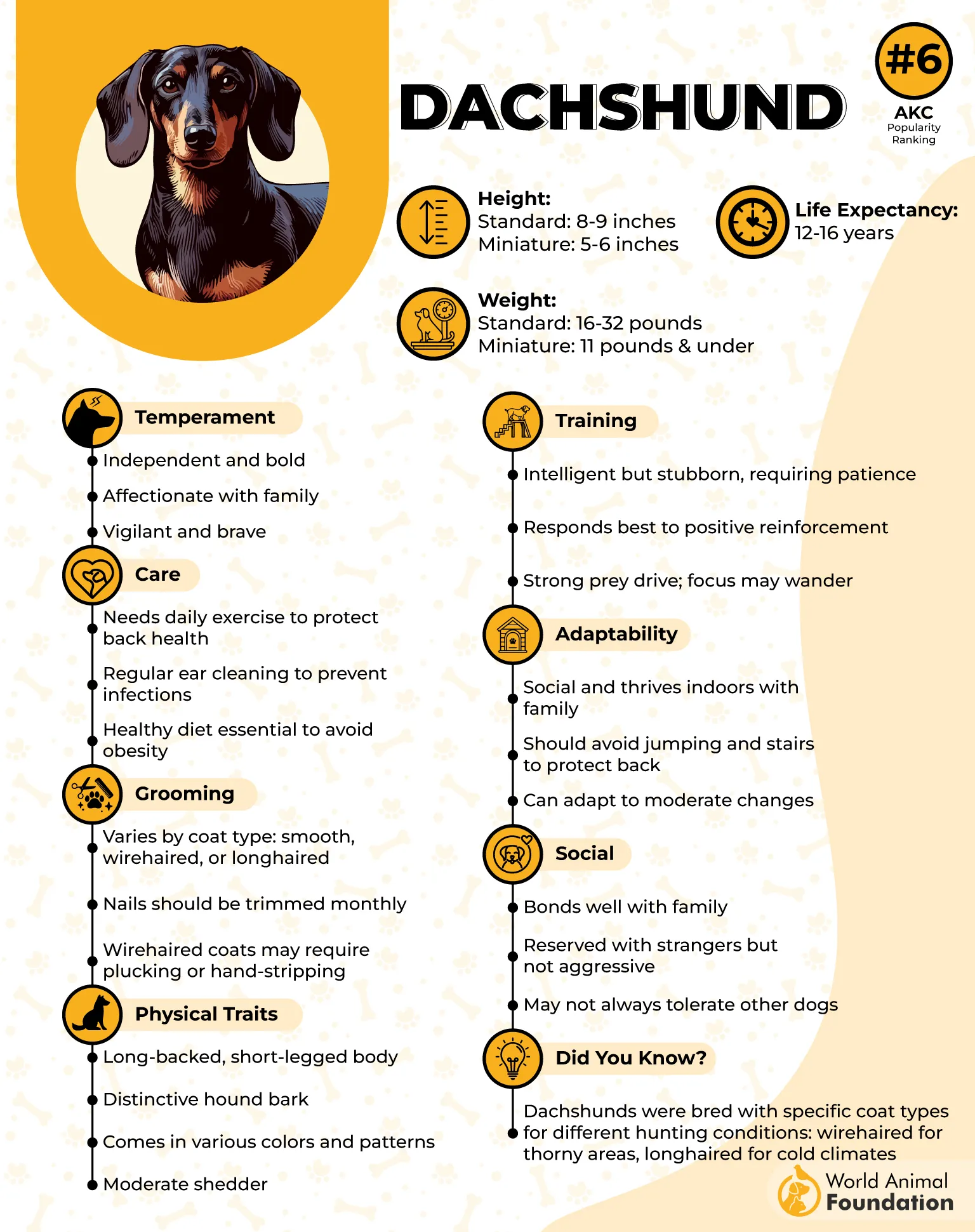
But beneath all that charm lies a few health quirks that every potential Dachshund parent should know about:
Intervertebral disc disease (IVDD)
Obesity
Patellar luxation
Eye problems like PRA, cataracts, and glaucoma
To protect your Dachshund’s back and prevent injuries, limit their jumping by using pet stairs or ramps near furniture and beds. Maintaining a healthy weight also reduces the risk of spinal problems.
With proper care, a healthy diet, and a bit of patience (and maybe a few ramps), Dachshunds can live long, happy lives filled with belly rubs, snuggles, and the occasional dramatic squeak when you try to pick them up incorrectly.
6. German Shepherd
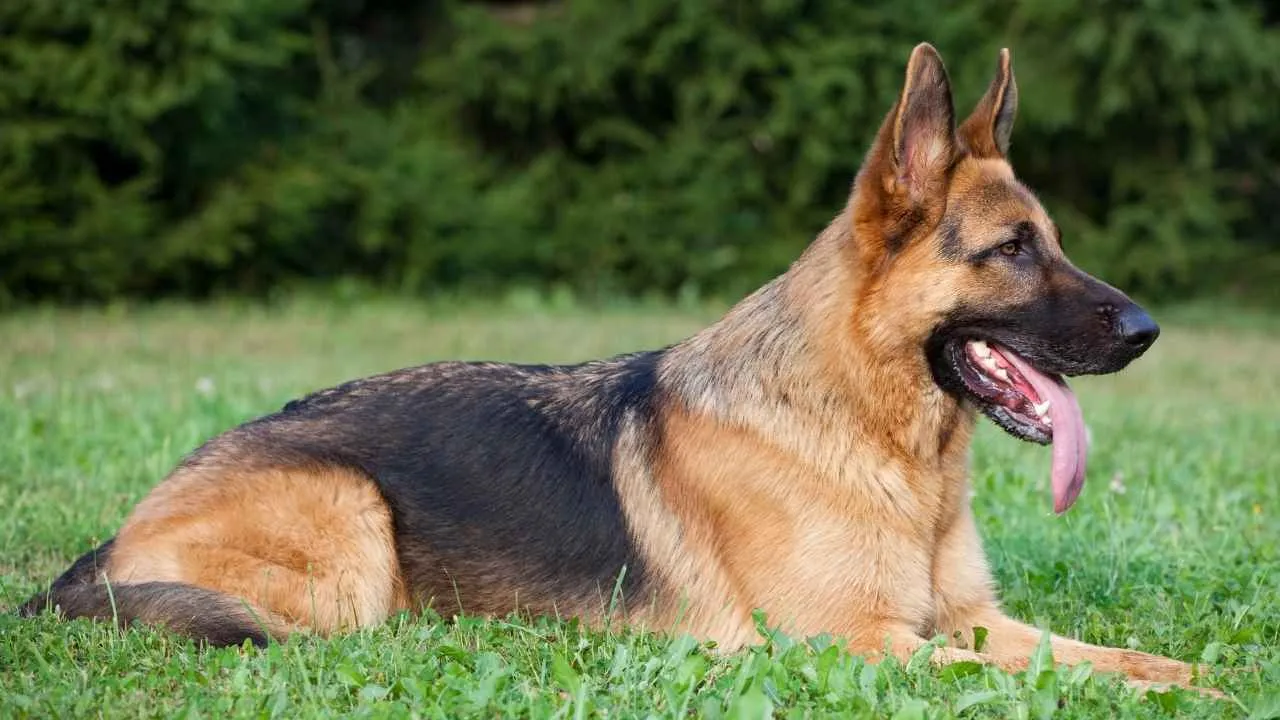
Lifespan: 9 – 13 years
German Shepherds: noble, loyal, and undeniably impressive, these popular breeds have been working side by side with humans since the 1800s.
Originally, this breed served as a herding dog, primarily for managing sheep. Over time, it has taken on many roles, including disability assistance, search-and-rescue, police work, and military service, while also being commonly kept as a companion dog.
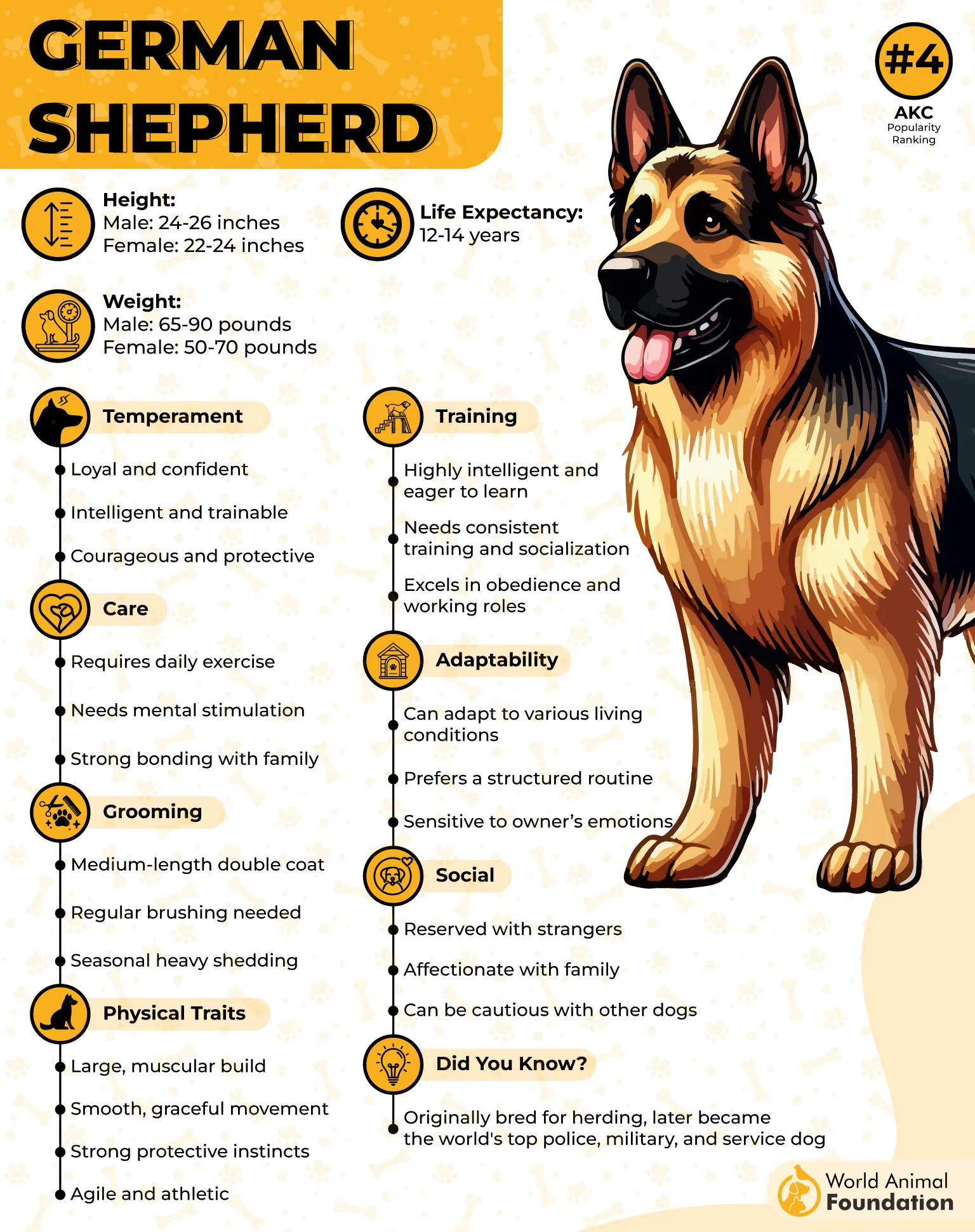
These guard dogs are truly the Swiss Army knife of the dog world—except way fluffier and with more personality. But all that power and grace come with several health challenges owners should keep an eye on:
Hip and elbow dysplasia
Degenerative myelopathy (DM)
Allergies
Cancer
Exocrine pancreatic insufficiency (EPI)
Epilepsy
Heart disease
Bloat
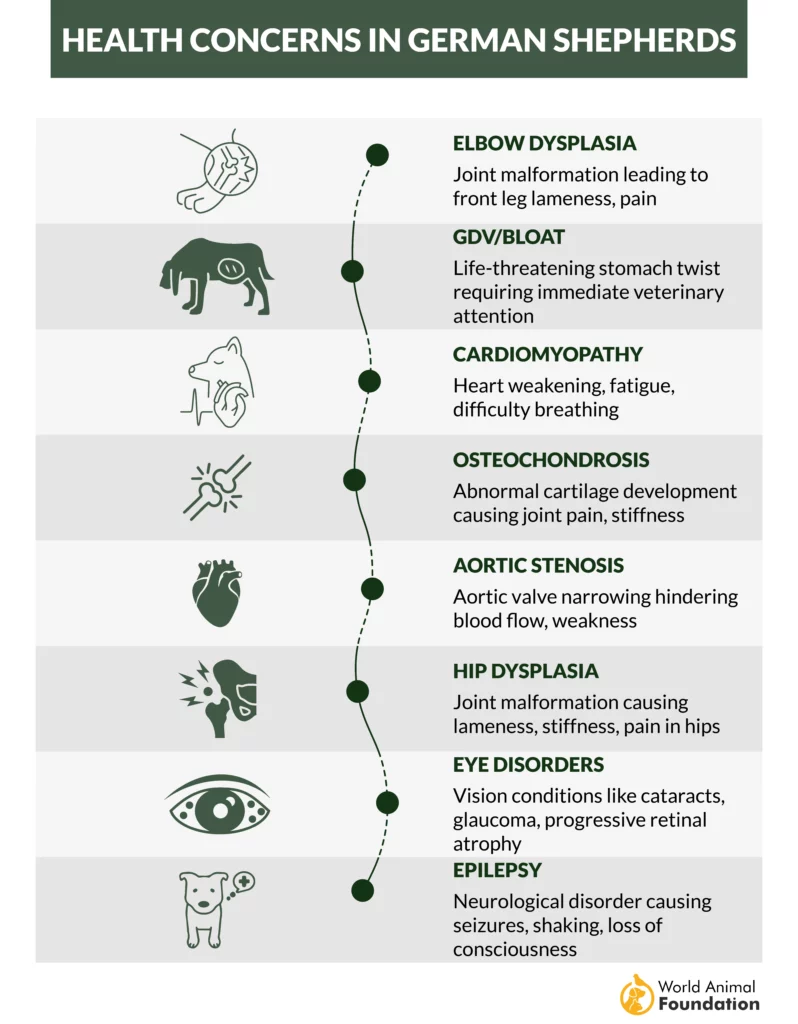
German Shepherds thrive on activity, purpose, and strong bonds with their families. Regular vet check-ups, proper nutrition, and a lot of love can help them live a full, happy life, all while keeping their trademark intelligence, courage, and loyalty in top form.
Just be ready for some serious shedding, boundless energy, and the occasional “supervisor” stare that says, “I’m watching you… always.”
7. Great Dane

Lifespan: 8 – 10 years
The Great Dane, known as a gentle giant, was first bred in 19th-century Germany to hunt wild boar and guard estates. Despite the name, this large breed has no connection to Denmark.
Known as the “Apollo of dogs,” Great Danes combine their impressive size and guardian heritage with a kind, family-loving nature. They are the tallest among working dog breeds and rank among the largest dog breeds in the world.
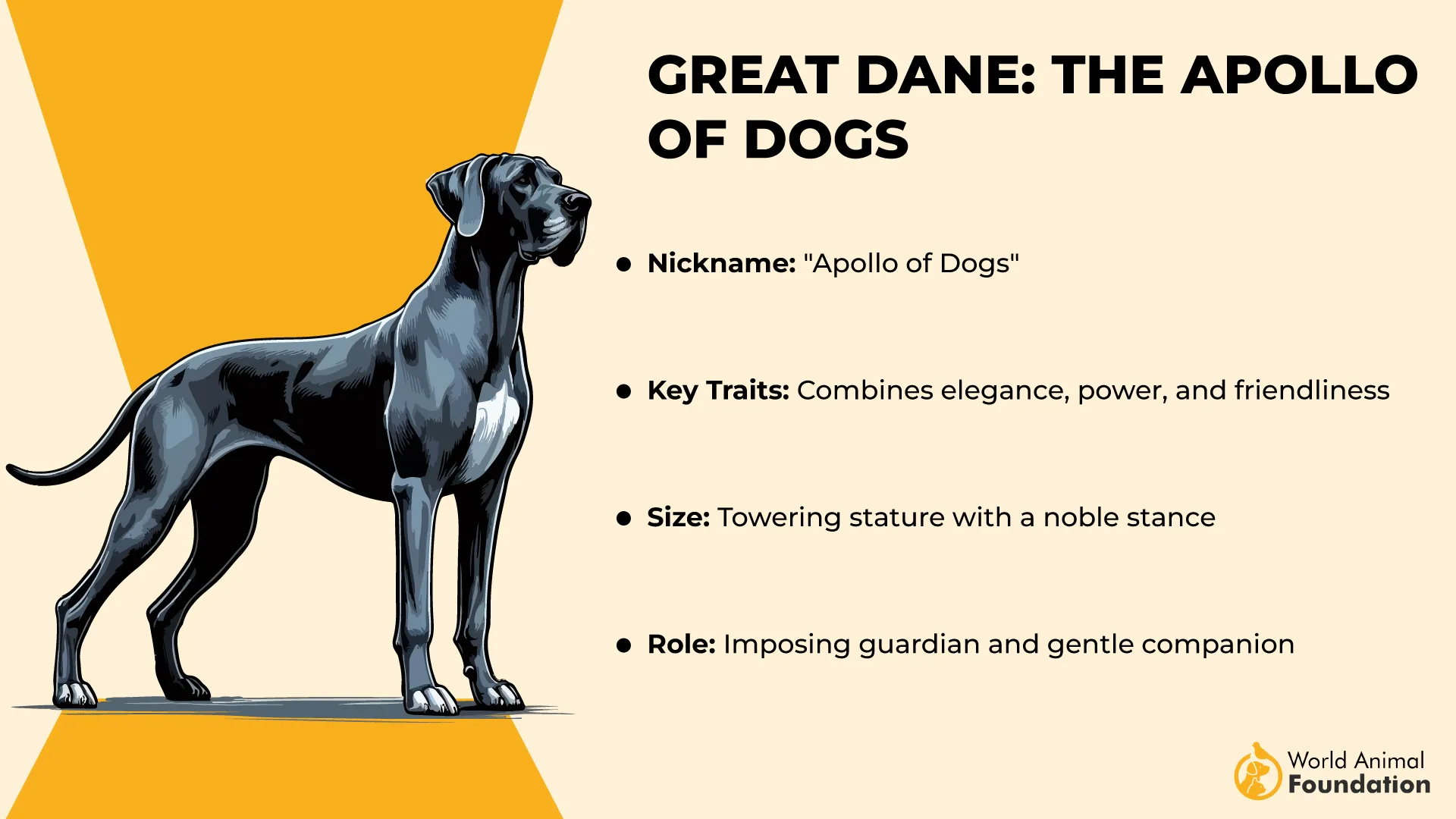
With their sweet, affectionate personalities, they often think of themselves as lap dogs… despite their size. But being a giant has its drawbacks. Their impressive stature comes with a few medical problems every owner should be aware of:
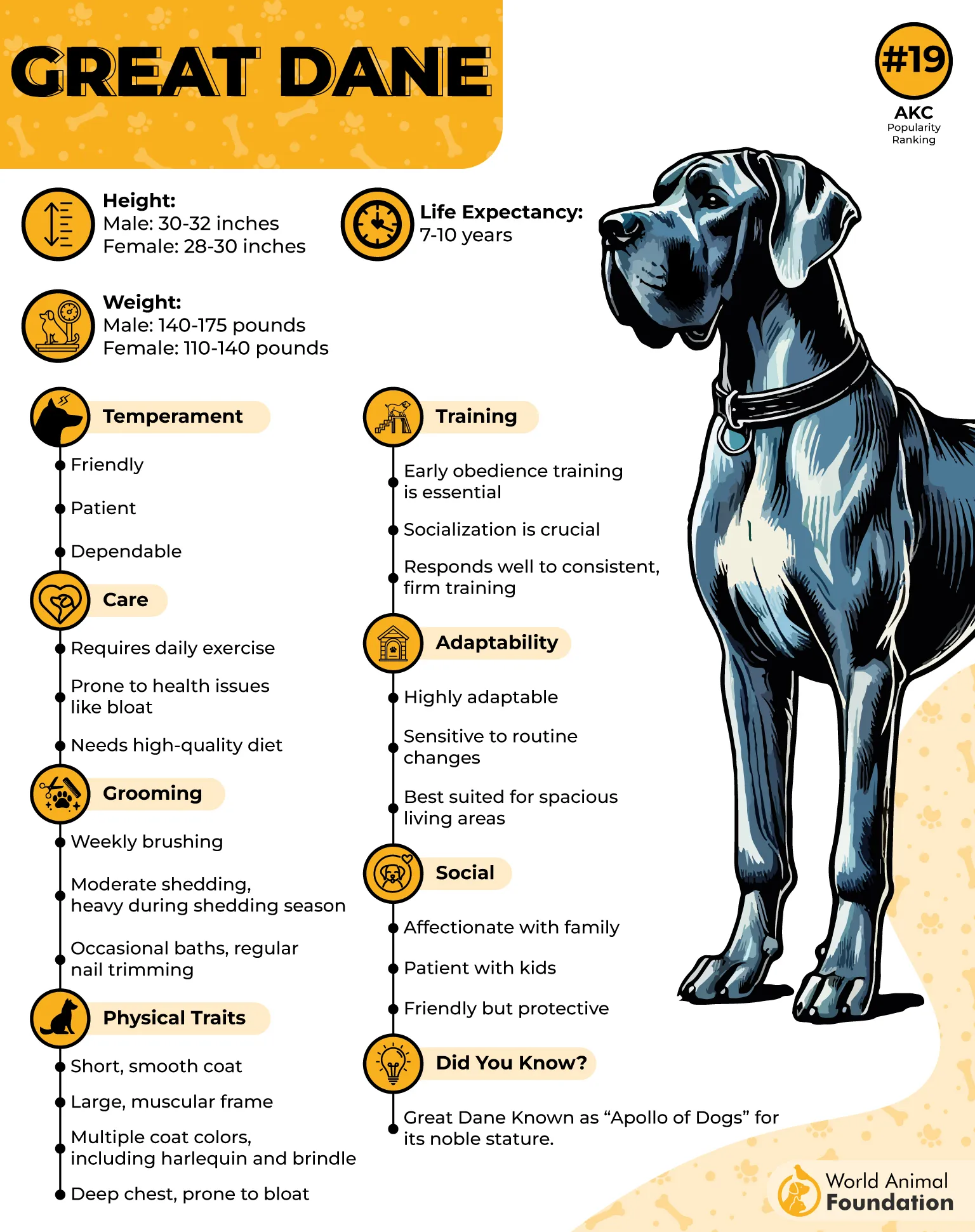
Gastric dilatation-volvulus (GDV) / bloat
Wobbler syndrome
Joint problems like hip and elbow dysplasia
Owning a Great Dane means committing to a life of extra-large beds, giant bowls, and plenty of space to stretch out.
With regular veterinary care, careful monitoring, and a lifestyle tailored to their needs, these gentle giants can live comfortably, showering their humans with loyalty, love, and enough cuddles to fill the room—just watch your toes.
Conclusion
When it comes to unhealthy dog breeds, awareness of potential health concerns is key to supporting your pet’s well-being. Many breeds are prone to joint issues, skin issues, breathing problems, and even life-threatening conditions like heart failure or certain cancers, making early detection and regular monitoring essential. Proper lifestyle management, including a balanced diet, controlled exercise, and mental stimulation, can help prevent or slow the progression of health problems such as hip dysplasia in Australian Cattle Dogs, Siberian Huskies, and other affectionate breeds.
Veterinary treatment and sometimes lifelong treatment may be required to maintain a healthy life, support joint health, especially when early signs appear at a young age. Choosing healthy breeds and considering pet insurance can make all the difference for pet owners seeking to keep their affectionate dogs happy and active despite common concerns. With vigilance, care, and attention, even dogs prone to a few issues can thrive and enjoy long, fulfilling lives.


